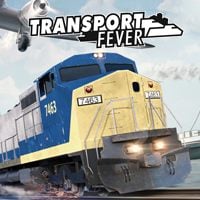Creating connections
The game is based on creating and managing transport connections and the vehicles, which you assign to them; however, you do not have complete control over the locations where you pick up goods or when the stations start accumulating resources or other products. The basic principle is to create appropriate connections. You can change the names of your connections at your will, as well as assign them their own colour. This can help you to organize a bit better, and you will have no troubles with finding your connections and determining whether they are successful or not.
Creating simple connections
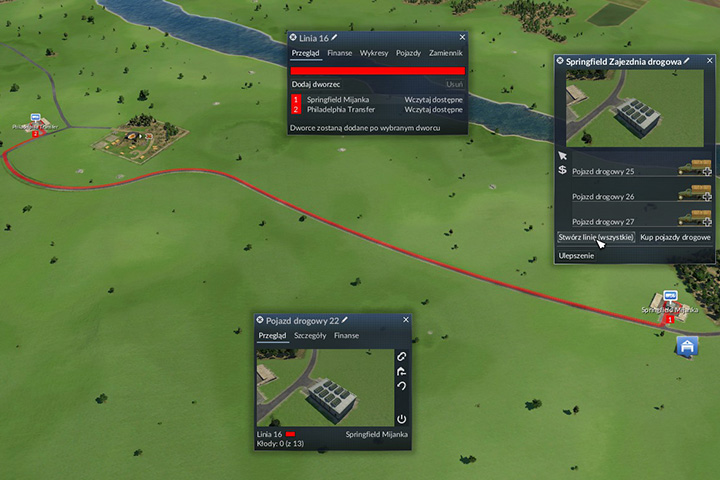
Line which revolve around simply transporting something from point A to point B can be created very easily. You choose the appropriate vehicle in the garage, and then you press the icon of a loop with an arrow on the right side. Now you pick the stations between which your vehicle will be travelling. If you have not created one yet, press "add new line". Make sure that the final station has the product that you want to transport in its range, otherwise the transport will not be loaded. When dealing with these simple connections it is best to pick the "automatically" option, when choosing the capacity. Choosing a dedicated capacity is necessary if the starting station receives more than one product. When it comes to buses, the process is similar. Build a few stops, minimum one per every district (that is the green, blue and yellow zone). This will increase your chance at attracting additional passengers. Be reasonable when assigning the number of vehicles/carts on a certain line. If you see that the starting station has a lot of articles to pick up, then throw in a few extra vehicles, however, when queues or large stoppages occur, you should think about selling/reassigning the surplus number of vehicles. If there are no such issues, there are still goods to transport but in small numbers, and there are no jams or queues near the station - then you have created an extremely balanced connection.
Behave similarly when creating railway, maritime or air lines. Remember to pay attention not only to stations, but also to finances. If it appears, that after a period of more than two years, a line is still not profitable, than it might be worth it to modify it or even shut it down. Maritime and aerial connections have a tendency not to visit their stations very often. On the other hand, ships have tremendous capacity for goods, and planes are extremely fast. In such cases, you can add additional machines, if the frequency of the connection does not satisfy your needs. The shorter the frequency, the more eager the passengers will be to use your airlines.
Creating combined / complex connections
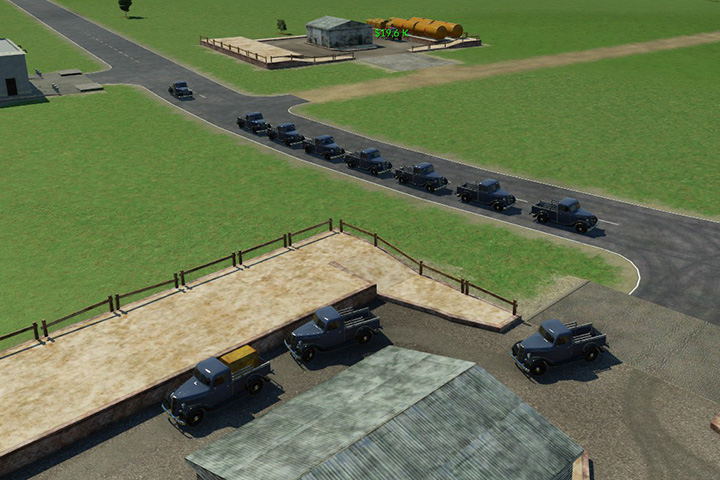
Creating combined lines is useful if you want to provide transportation for an entire production chain, and it is not possible to achieve that by simply connecting two stations. You will use a more complex form of transportation, in order to save time and create a more organized connection. You will often have to reasonably use the "Full Load" option, especially when dealing with land vehicles. It is very easy to create traffic jams then. If you have assigned several lines to the same station, then it is better to build another one in the vicinity, or use the "Load If Available" option, which will load the goods that are currently available on the station.
I would like to point out two available options, when building such advanced connections :
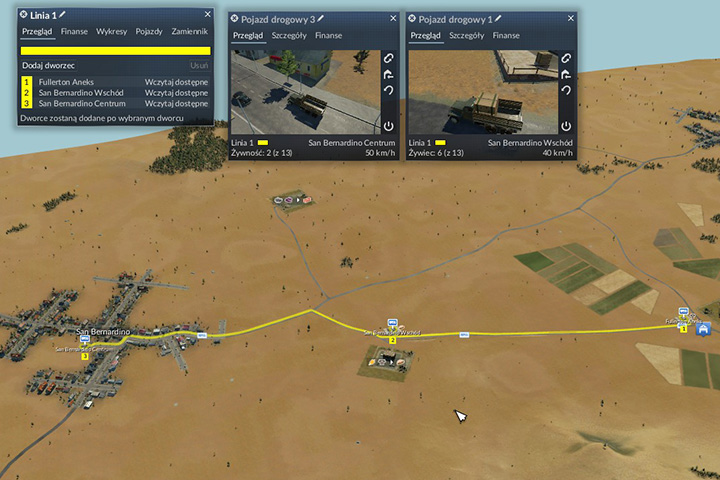
The first option, you create a long, complex connection, where your machines stop at several stations using only one line. In such a case you will rely on the automatic loading of your transports. Example - you want to create the following transportation chain: grain (station A) - food (station B) - commercial district (station C). You create a long line, where your vehicles stop at each station (therefore we can call the line ABC). You do not assign any specific type of product to the transports. They collect grain and then they unload it on the next station. If there is food available then it is loaded onto the transports, and they head to the station in the city. Afterwards, they come back to the station near the farm.
Here it is worth not assigning the full load options apart from the first station, otherwise the transports will be stuck somewhere along the line. Trucks or trains with diversified storage areas are perfect options in such connections. Ships, however, can be too slow to perform such a task, and it will be difficult to connect them with every necessary location. You will usually be creating bus connections in cities in a similar fashion. A drawback of this option is the fact, that occasionally, your transports will be driving empty, when e.g. the factory has not managed to produce more goods yet.
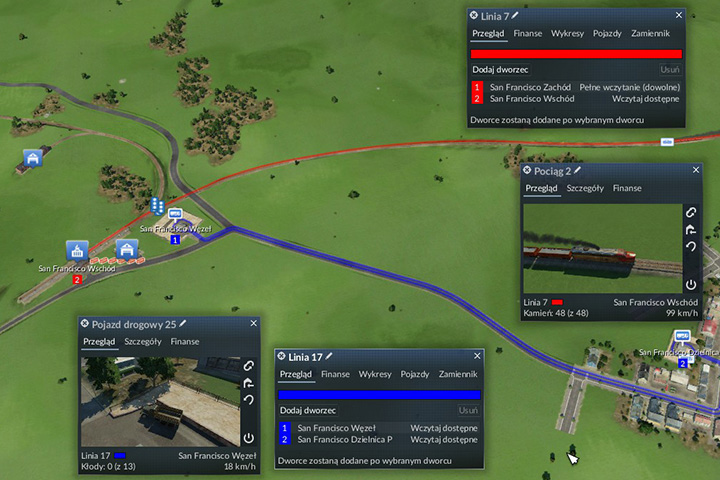
The second option. You create several lines, which together form one "combined" connection. The rules while creating the lines are similar to the previous case, but we are motivated by a slightly different idea. Example - you want to create a simple chain: stone (station A) - construction materials (stations B and C) - industrial district (station D). However, the quarry is quite far away, but the factory itself is near the city. You first create a railway connection to transport the stone (Line AB). Next, you create a connection from the factory to the industrial district (Line CD). As the distance between points C and D is quite short, you assign trucks to this connection.
After creating both lines the game will detect the demand for products and calculate that your connections can satisfy that demand. The train will transport the stone, which the factory will turn into construction materials, the materials will be stored on the station where the trucks will automatically load them up and transport them to the industrial zone in the city. Here, it is worth using the full load option on stations A and C, as that will increase the overall effectiveness and you will not have to worry about any congestions. This is a perfect example of a combined connection, in this case "Line AB + CD". The game can detect all of the dependencies between lines and create a fitting demand system. Even if your transport is stuck in the middle of nowhere, another transport will pick up the load and carry it onwards, earning you money! The system calculates the profit for a transport, and then divides it among every connection, which takes part in transport to a destination point.
Trucks and trains are the most effective combination of transports, but combining ships with land connections can also be a good solution. You will create bus connections to airports in a very similar fashion. The planes will then transport the passengers to a more distant destination. If lines are connected in such a way, then the number of passengers to transport will increase.

Another solution organized in the Line AB BC style. You can also create a line where the train will be stopping in the outskirts of the city, e.g. to deliver food. Right next to the train station you will place a point for the trucks, where they will load the food and transport it into the city, to the blue commercial district. Note, that the train generates profits, despite the fact that it does not deliver the goods directly to the recipient. The profits are divided between these two connections, with the distance of transport, speed, etc. taken into consideration.
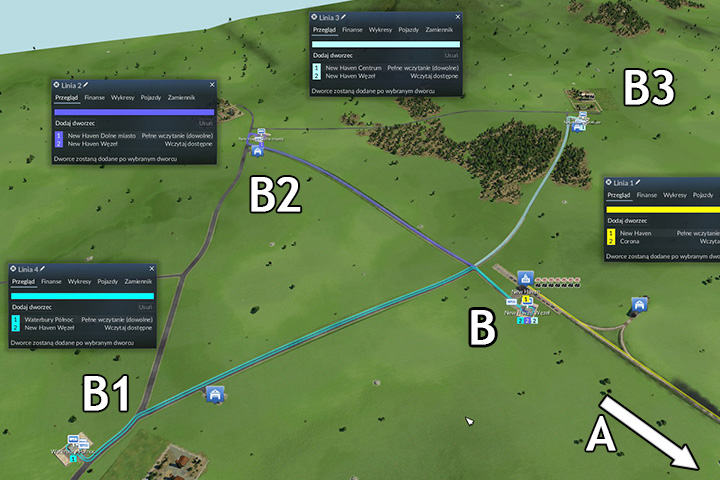
Line AB B1,B2,B3 and the other way around. First you create one long connection, which transports large quantities of a certain type of product (Line AB). Afterwards, you create several others, which diverge and go in different directions (from station B to B1,B2,B3). Example - a rich oil field - oil refinery (fuel) - several cities. You can also create such a line in an opposite fashion. You link up several production facilities to a large railway line or a ship, and then direct the goods to a destination point.
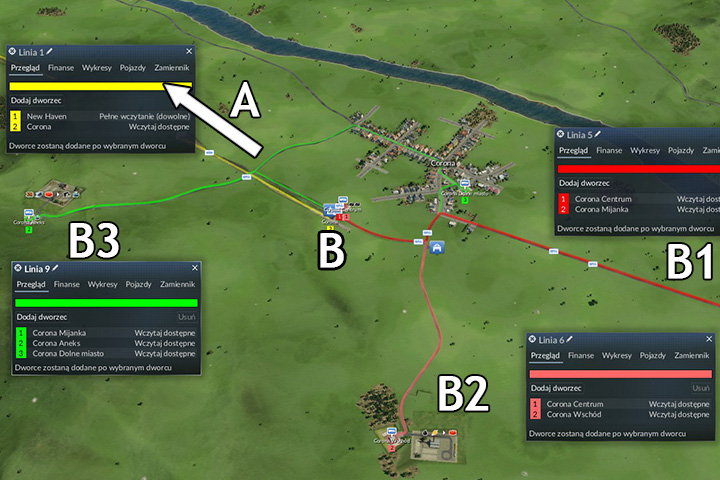
Line 1A,2A,3A AB B1,B2,B3. A similar approach to the one presented above, only a further expansion of the previous idea. Let us assume, that you have several extraction points close together, but all of them are far away from the production points. You create a railway line and a truck station nearby (Stations A). The vehicles bring the resources from the points (Stations 1A,2A,3A) to the railway station (A). The train then transports the products to the other side (Station B), and after they are unloaded from the train, the trucks pick them up again and transport them to the next points in the production cycle (Stations B1,B2,B3).
You are not permitted to copy any image, text or info from this page. This site is not associated with and/or endorsed by the Gambitious Digital Entertainment or Urban Games. All logos and images are copyrighted by their respective owners.
Copyright © 2000 - 2025 Webedia Polska SA for gamepressure.com, unofficial game guides, walkthroughs, secrets, game tips, maps & strategies for top games.
